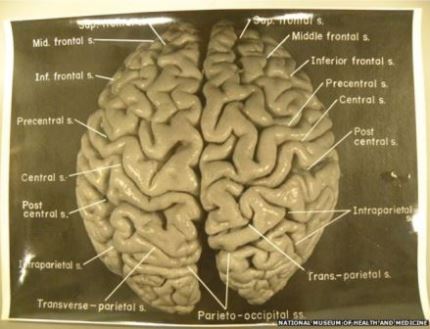How Einstein’s brain helps study intelligence and lifelong neuroplasticity

.
The strange afterlife of Einstein’s brain (BBC News):
“Einstein’s death 60 years ago was just the start of a strange journey for the most prized part of his anatomy, his brain. Stored in jars and on slides, it is still inspiring awe and scholarly research…
Harvey had overseen the division of the brain into 240 blocks, and created 12 sets of 200 slides containing tissue samples indexed to the blocks. These were delivered, as promised, to the great and the good of 1950s neuropathology…Those who did reply found it to be no different from normal, non-genius brains. This mirrored the result Harvey had received when he first weighed the brain, and found it to be — at 1,230g — towards the low end of the normal range for men of Einstein’s age…
Perhaps the most striking is that Einstein had an extra ridge on his mid-frontal lobe, the part used for making plans and working memory. Most people have three ridges but Einstein had four. She also found Einstein’s parietal lobes were dramatically asymmetric, and he had a knob on his right motor strip. This latter feature is called the “sign of omega” and it is thought to be correlated to musicians who use their left hands. Einstein played the violin…
The question arises: Are these features that Einstein developed throughout a life devoted to higher thought, or was he born with them? People are born with the basic pattern of convolutions in their brains, but the extent to which these are reshaped by experience is unknown. The sign of omega may have developed as Einstein practised the violin as a boy, Falk says, but she thinks it is more difficult to assess the contribution of life’s experiences to other parts of the brain.”
Learn more:


